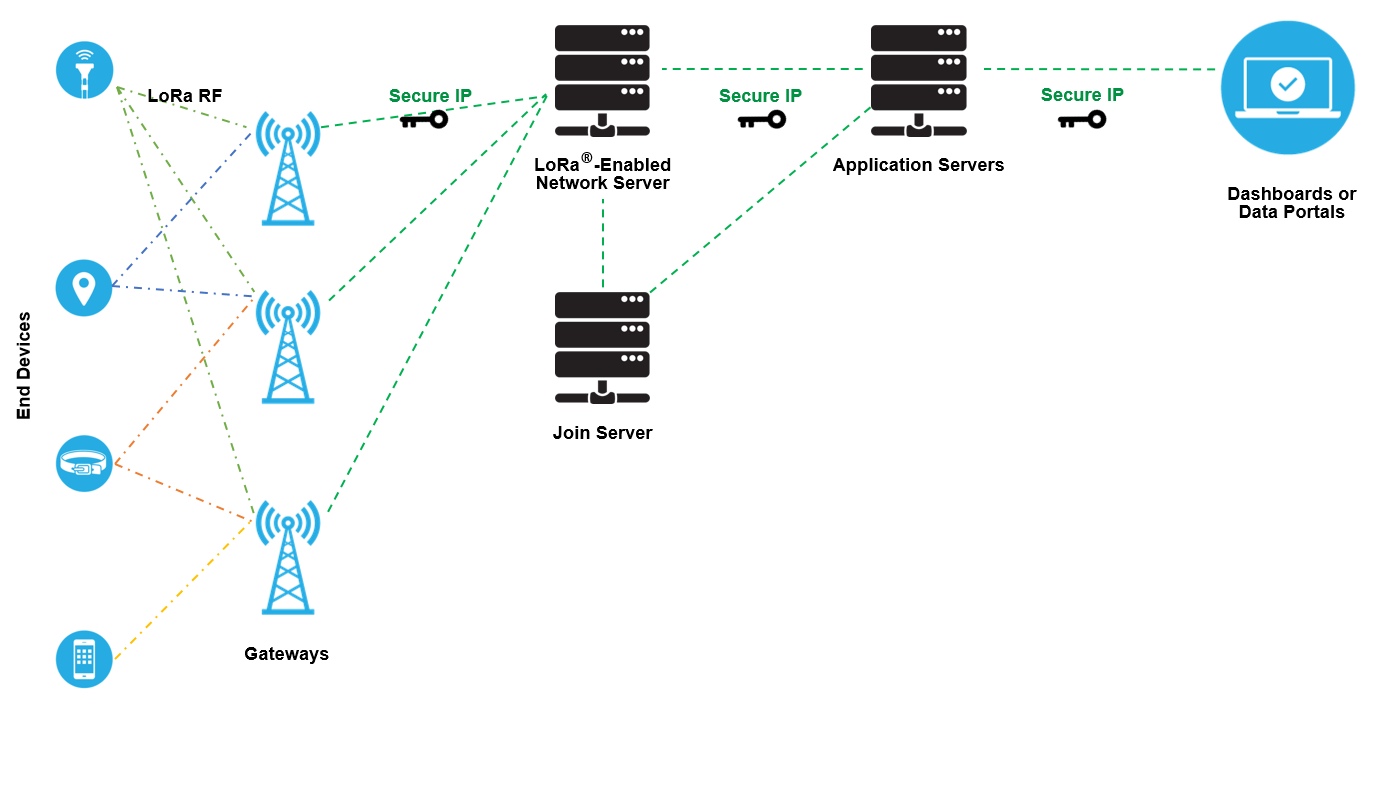What is LoRaWAN
LoRaWAN (a network architecture and protocol) is a type of low-power wide-area-network (LPWAN). LPWANs are used for low-power and low-data applications. In the US, LoRaWAN uses the ISM Band centered at 915 MHz (902-928 MHz). Battery-powered end-nodes can be deployed 1+ kilometers from the nearest RF gateway.
More Info: LoRaWAN for Low Power Wireless
LoRaWAN System Components:
- End-nodes (devices)
- RF Gateways
- Network Servers
- Application Servers
- Data storage and analysis
LoRaWAN System Components (Source: TBD)

End-Nodes
Arduino-style MCU; Adafruit Feather M0 with LoRa (aka RadioFruit). Using theLoRaWAN-MAC-in-C Libraryfrom MCCI.
More Info: Adafruit Feather for End-Nodes
Gateways
LoRaWAN Gateways perform as routers, equipped with a LoRa (RF) concentrator, allowing them to receive (and transmit) LoRa frames.
More info: LoRaWAN Gateways
Network Server
The LoRaWAN Network Server (NS) provides radio control, end-point management, and an interface to the application server.
More info: EveryNet Network Servers and Radio Transport
Application Server
The Application Server (AS) provides application enablement. It decrypts and decodes the application data for forwarding to the applications.
This project uses Aexonis CemTore for the Application Server.
More info: CemTore Applications and Devices
Client Application
Clients of the data will deploy applications to provide for analytics and alerting based on data recevied from end-node.
This project supports using a private MQTT broker for receiving the Application Data.
Reference Diagram
This diagram shows the topology for a LoRaWAN deployment using Aexonis CemTore as the application gateway.


